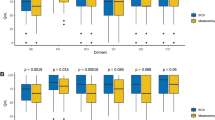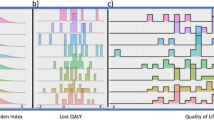Abstract
This study examines the prognostic value of clinical assessments, including a 3-fold classification of cancer patients by treatment intention. It is based upon a sample of 253 patients with different cancer diagnoses who filled out a 108-item questionnaire. Cox regression analysis (the proportional hazards model) was used to analyse the relationship of the three groups of covariates (clinical, demographic and psychosocial) with survival. The univariate analysis showed that several clinical, demographic and psychosocial covariates are significantly related to survival. The study located two main prognostic factors: the 3-fold classification by treatment intention being the most important one, followed by physical functioning which may be seen as a proxy for performance status. Several additional covariates including psychosocial ones were related to survival when considered separately. However, their effects disappeared when controlling for treatment intention and physical functioning. Thus, the additional psychosocial covariates did no add to the prognostic value of the model.
This is a preview of subscription content, access via your institution
Access options
Subscribe to this journal
Receive 24 print issues and online access
$259.00 per year
only $10.79 per issue
Buy this article
- Purchase on Springer Link
- Instant access to full article PDF
Prices may be subject to local taxes which are calculated during checkout
Similar content being viewed by others
Author information
Authors and Affiliations
Rights and permissions
About this article
Cite this article
Ringdal, G., Götestam, K., Kaasa, S. et al. Prognostic factors and survival in a heterogeneous sample of cancer patients. Br J Cancer 73, 1594–1599 (1996). https://doi.org/10.1038/bjc.1996.300
Issue Date:
DOI: https://doi.org/10.1038/bjc.1996.300
This article is cited by
-
Pretreatment quality of life as a prognostic factor for early survival and functional outcomes in patients with head and neck cancer
Quality of Life Research (2016)
-
Understanding cardiovascular injury after treatment for cancer: an overview of current uses and future directions of cardiovascular magnetic resonance
Journal of Cardiovascular Magnetic Resonance (2013)
-
Quality of life predicts survival in patients with non-small cell lung cancer
BMC Public Health (2012)
-
Development of a computer-administered mobility questionnaire
Supportive Care in Cancer (2011)
-
Quality of life data as prognostic indicators of survival in cancer patients: an overview of the literature from 1982 to 2008
Health and Quality of Life Outcomes (2009)



